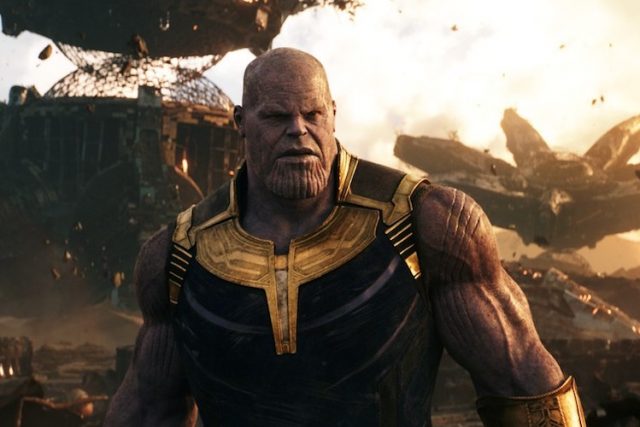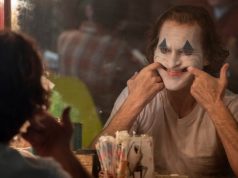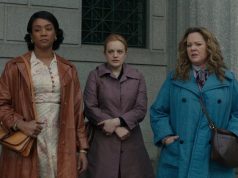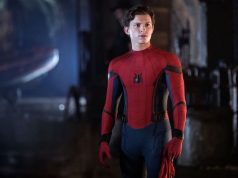
You can go crazy trying to understand the thinking of people who make and sell Hollywood blockbusters, but what they’ve done with “Avengers: Infinity War” is fascinating. It was filmed concurrently with its own sequel (due 52 weeks from now), and the movies were first announced as “Infinity War: Part 1” and “Part 2.” But at some point the decision was made to give them separate titles (next year’s hasn’t been announced yet) and bill them as two standalone movies. “I wouldn’t call it one story that’s split in half,” said Marvel producer Kevin Feige. “I would say it’s going to be two distinct movies.”
Well, I haven’t seen the second one yet, but having seen “Infinity War,” I have to say: It sure feels like one story that’s split in half. If it’s not, then “Infinity War” has a dismal, disappointing climax that deflates everything the franchise was building toward. If it’s an ending, it’s a bad one. If it’s a cliffhanger, it’s just a cliffhanger. You sigh and wait for it to be resolved while you wonder how they can expect you to care about an earth-shattering conclusion when the previous two hours (and 18 movies) were all about these magic stones that can undo anything.
Why pretend it’s a standalone conclusion when it clearly isn’t? Won’t audiences enjoy it more if they understand going in that it’s a two-parter? Ugh, like I said, you could go crazy.
Except for the “you can’t really expect us to think this is the end” ending, it’s a fun superhero crossover event, directed by the same team (Anthony and Joe Russo) who deftly handled so many characters in “Captain America: Civil War.” Curiously, the protagonist isn’t one of the Avengers or the Avengers as a team; it’s the villain, Thanos (Josh Brolin), a large purple titan with a scrotal chin and an unquenchable desire to collect six precious gems called Infinity Stones so that he can fulfill his dream of killing 50 percent of the universe’s population.
“Iron Man” (2008) B
“The Incredible Hulk” (2008) B
“Iron Man 2” (2010) B-
“Thor” (2011) B
“Captain America: The First Avenger” (2011) B
“The Avengers” (2012) B+
“Iron Man 3” (2013) B+
“Thor: The Dark World” (2013) C-
“Captain America: The Winter Soldier” (2014) B
“Guardians of the Galaxy” (2014) B
“Avengers: Age of Ultron” (2015) B-
“Ant-Man” (2015) B
“Captain America: Civil War” (2016) B
“Doctor Strange” (2016) B+
“Guardians of the Galaxy Vol. 2” (2017) B-
“Spider-Man: Homecoming” (2017) B+
“Thor: Ragnarok” (2017) B
“Black Panther” (2018) B
“Avengers: Infinity War” (2018) B-
“Ant-Man and the Wasp” (2018) B
“Captain Marvel” (2019) B-
Thanos has shown up in a few previous Marvel films, usually as a cameo in a mid-credits scene, but he and these stones have been the topic of considerable discussion — often to the annoyance of viewers who wanted to focus on the story at hand and didn’t care about groundwork being laid for future chapters. The gems are at last relevant in “Infinity War,” their locations known, Thanos’ plans for getting them and everyone else’s plans for stopping him manifest. The MacGuffins that seemed like unnecessary distractions are finally given their due in an engaging, planet-hopping story.
Like Lucky Charms, the stones are each a different color and control a different facet of the universe: time, space, power, mind, soul, and reality. Thanos had one before “Infinity War” started and has a second one before it’s 15 minutes old. While he pursues the two remaining stones that are in space, his brutal “children” are dispatched to get the two believed to be on Earth, leading to showdowns in New York City and a certain fictional African nation. Bruce Banner (Mark Ruffalo), who’s having trouble getting his Hulk up, returns to Earth to warn everybody, starting with Doctor Strange (Benedict Cumberbatch), who enlists Tony Stark (Robert Downey Jr.), which leads to Peter Parker (Tom Holland) getting involved, etc.
There’s never a point where all of the superheroes are together in one place, and at least two of them aren’t in the movie at all (adequately explained by a single line of dialogue). But the pairings that longtime Marvel screenwriters Christopher Markus and Stephen McFeely did come up with are inspired, showing just a few of the entertaining combinations that are possible when you have such a deep bench of well-established characters. Stark and Strange, both brilliant egotists who are used to being in charge, have much to say to each other. In space, Thor (Chris Hemsworth) is rescued by the Guardians, and Quill (Chris Pratt) feels outmanned by his muscles and general Thor-ness. (“This is no ‘dude,'” Drax says to Quill. “You’re a dude. This is a MAN.”) Peter Parker hustles around like the team’s gofer, eager to please, apologetic over not remembering all the new people’s names. When Vision (Paul Bettany) proposes that the Infinity Stone lodged in his skull be destroyed so Thanos can’t get it, Steve Rogers (Chris Evans) suggests going to Wakanda to see if T’Challa (Chadwick Boseman) — or more likely his sister, Shuri (Letitia Wright) — can extract it without killing him. Thor, Rocket Raccoon (Bradley Cooper), and Groot (Vin Diesel) have a side mission involving someone played by Peter Dinklage (perfect casting; you’ll know why when you see it).
The banter among these and the many, MANY other characters is usually funny, but there’s not as much of it as you want there to be. There’s no time! “Infinity War,” perhaps more so than any previous Marvel film, is extremely plot-driven, and there’s a ream of Thanos-related exposition to catch up on. (Josh Brolin brings impressive nuance to the guy, and Zoe Saldana’s performance as his adopted daughter Gamora is the film’s heart.) After a while, the battles and face-offs grow repetitive. It’s just so much, you know? And that’s aside from the characters who are present but don’t have much to do, which I suppose might be rectified in Part 2 (sorry, in next year’s untitled “Avengers” sequel). Only time will tell, but let’s not be surprised if both movies together end up feeling like they ought to have been one three-hour epic instead of two overstuffed CGI orgies.
B- (2 hrs., 29 min.; )





